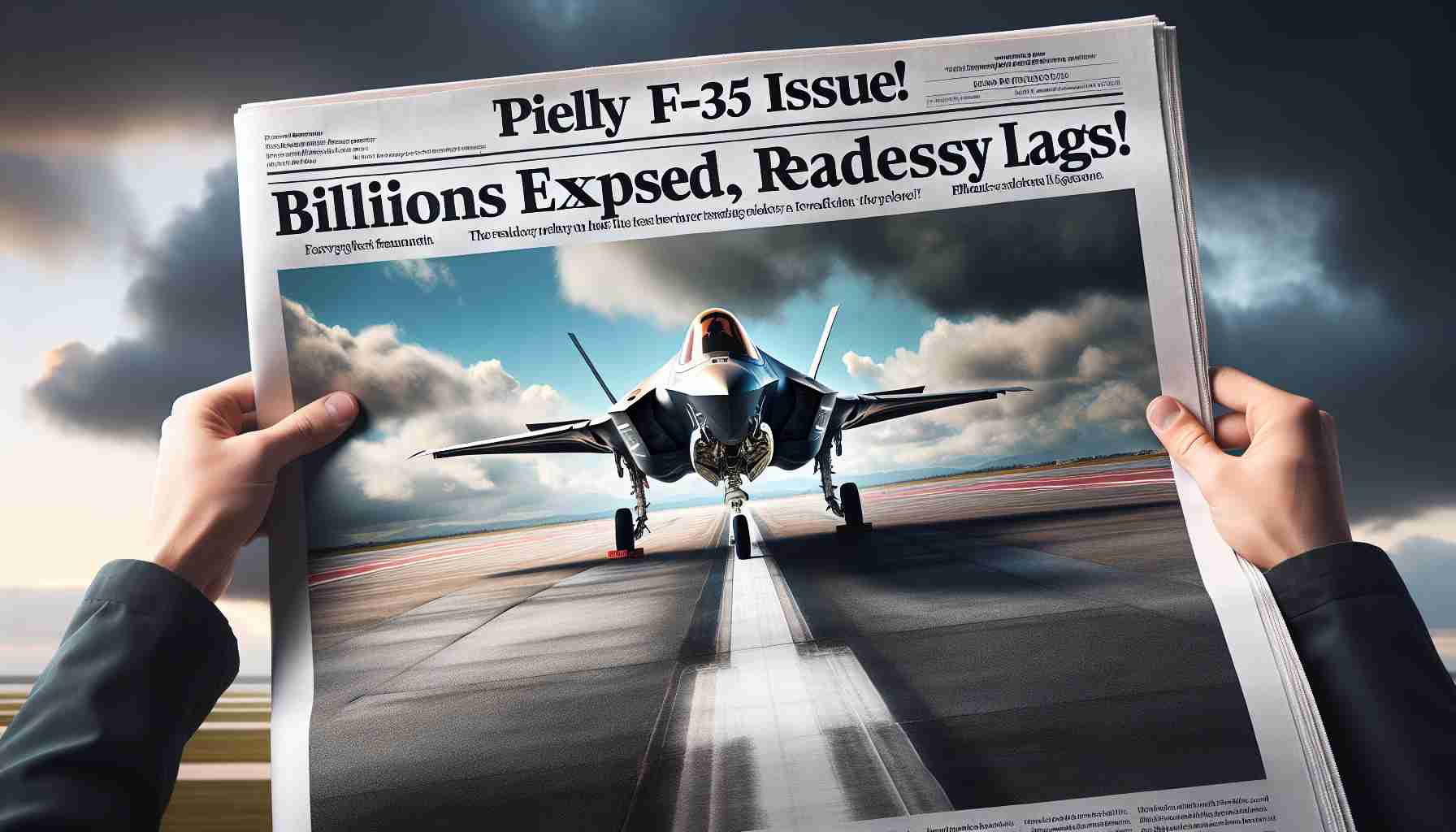The F-35 Lightning II, the Pentagon’s ambitious fifth-generation fighter jet, continues to face significant challenges, despite a staggering $12 billion spent on its maintenance from 2018 to 2023. A recent report by the Government Accountability Office has highlighted the ongoing struggles to improve the plane’s operational readiness.
The goal was to enhance the mission-capable rate of the F-35 fleet by 10%, a target that was woefully missed with only a 2.6% increase. These disappointing results point to persistent issues with maintenance backlogs, shortages of spare parts, and a heavy reliance on contractors for repairs.
This multirole jet, meant to be the backbone of the U.S. and allied air forces, also faces criticism for its overwhelming costs. With a projected total expenditure exceeding $1.5 trillion, concerns grow that these issues could compromise its effectiveness in a potential major military conflict.
Decision-makers decided to prioritize the F-35 over the F-22A Raptor in a controversial move, which some experts now view as a costly error. Critics argue that the F-35’s operational struggles mean it may never live up to the high expectations set for it, especially compared to the F-22’s capabilities.
With the total lifetime cost of the F-35 program expected to reach $2 trillion, questions remain about whether these challenges can be resolved in time to prepare the aircraft for the demands of modern warfare. Whether this ambitious yet troubled fighter jet can overcome these hurdles remains to be seen, as geopolitical tensions continue to rise.
The Hidden Impacts of Military Investment: How the F-35’s Struggles Reflect on Humanity and Technology
The F-35 Lightning II, a cornerstone for modern air defenses and a testament to the complexity of contemporary technology, is embroiled in controversy. As scrutiny over the program’s staggering costs and operational inefficiencies intensifies, a broader discussion emerges: what do these challenges say about the future trajectory of human technological advancement and military strategy?
The Cost of Pushing the Boundaries
The enormous budget allocated to the F-35, projected to potentially hit $2 trillion over its lifetime, has sparked debate on military spending priorities. This financial commitment underscores the balancing act between advancing technology and managing taxpayer dollars. The sheer scale raises an important question: Are we investing in the right technology for the future, or are we pouring resources into projects that aren’t meeting expectations?
Implications for Global Technology Development
Critics suggest that resources committed to the F-35 program could have been redirected to other technological advancements, such as enhancing cybersecurity measures, artificial intelligence in defense systems, or exploring new energy sources for military use. The opportunity cost of the F-35’s extensive funding is a topic that highlights the broader implications of investment decisions on technological growth and innovation.
Advantages and Disadvantages
The F-35 is lauded for its stealth capabilities, advanced avionics, and versatility in carrying out various types of missions. Its promise lies in its potential to dominate aerial combat and has been a pivotal component of the U.S. and allied forces’ strategic defenses. However, its shortcomings point to critical vulnerabilities in relying heavily on untested or emerging technologies without fully understanding and addressing lifecycle logistics.
On the downside, the heavy dependence on contractors for maintenance creates vulnerabilities that could affect operational readiness in a conflict. The ongoing issues with spare parts and maintenance backlog emphasize the risk of over-reliance on advanced technologies without parallel advancements in supply chain logistics.
What Could the Future Hold?
Could these challenges pave the way for a broader reevaluation of priorities in military funding? This situation may propel a shift towards multi-dimensional strategies where investment in one area, like the F-35, is balanced with commitments to emerging fields such as drone technology or space-based defense systems.
Fact or Fiction: The Real Impact on Future Technologies
While the F-35’s struggles are significant, it’s important to view these challenges as a part of a larger narrative on innovation. Just as the development of the Internet stemmed from military projects, the lessons learned from the F-35 may catalyze improvements and breakthroughs in technology. Understanding these implications can drive future projects towards more sustainable and efficient solutions.
For more detailed insights into cutting-edge technology and defense systems, visit Lockheed Martin or DARPA.







